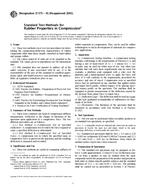1.1 This practice covers recommendations for the retrieval, handling, and analysis of implanted medical devices and associated specimens that are removed from patients during revision surgery, at postmortem, or as part of animal studies. This practice can also be used for analysis of specimens and lubrication fluids from in vitro wear tests and joint simulators. The aim is to provide guidance in preventing damage to the associated specimens which could obscure the investigational results, and in gathering data at the proper time and circumstance to validate the study.
1.2 This practice offers guidelines for the analysis of retrieved implants to limit damage to them, and to allow comparisons between investigational results from different studies. The protocols are divided into three stages, where Stage I is the minimum non-destructive analysis, Stage II is more complete non-destructive analysis, and Stage III is destructive analysis. Standard protocols for the examination and collection of data are provided for specific types of materials in relation to their typical applications. For particular investigational programs, additional, more specific, protocols may be required. If special analytical techniques are employed, the appropriate handling procedures must be specified.
1.3 This practice recommendation should be applied in accordance with national regulations or legal requirements regarding the handling and analysis of retrieved implants and excised tissues, especially with regard to handling devices which may become involved in litigation, as per Practice E 860.
1.4 A significant portion of the information associated with a retrieved implant device is often at the device-tissue interface or in the tissues associated with the implant and related organ systems. Attention should be given to the handling of adjacent tissues, so as not to interfere with study of the particles in the adjacent tissue, a chemical analysis for the byproducts of degradation of the implant, or a study of the cellular response to the implant.
1.5 This standard may involve hazardous materials, operations, and equipment. As a precautionary measure, removed implants should be sterilized or minimally disinfected by an appropriate means that does not adversely affect the implant or the associated tissue that may be subject to subsequent analysis. A detailed discussion of precautions to be used in handling of human tissues can be found in ISO 12891-1. This standard does not purport to address all of the safety concerns, if any, associated with its use. It is the responsibility of the user of this standard to establish appropriate safety and health practices and determine the applicability of regulatory limitations prior to use.
Product Details
- Published:
- 10/01/2005
- Number of Pages:
- 16
- File Size:
- 1 file , 180 KB
- Redline File Size:
- 2 files , 300 KB


